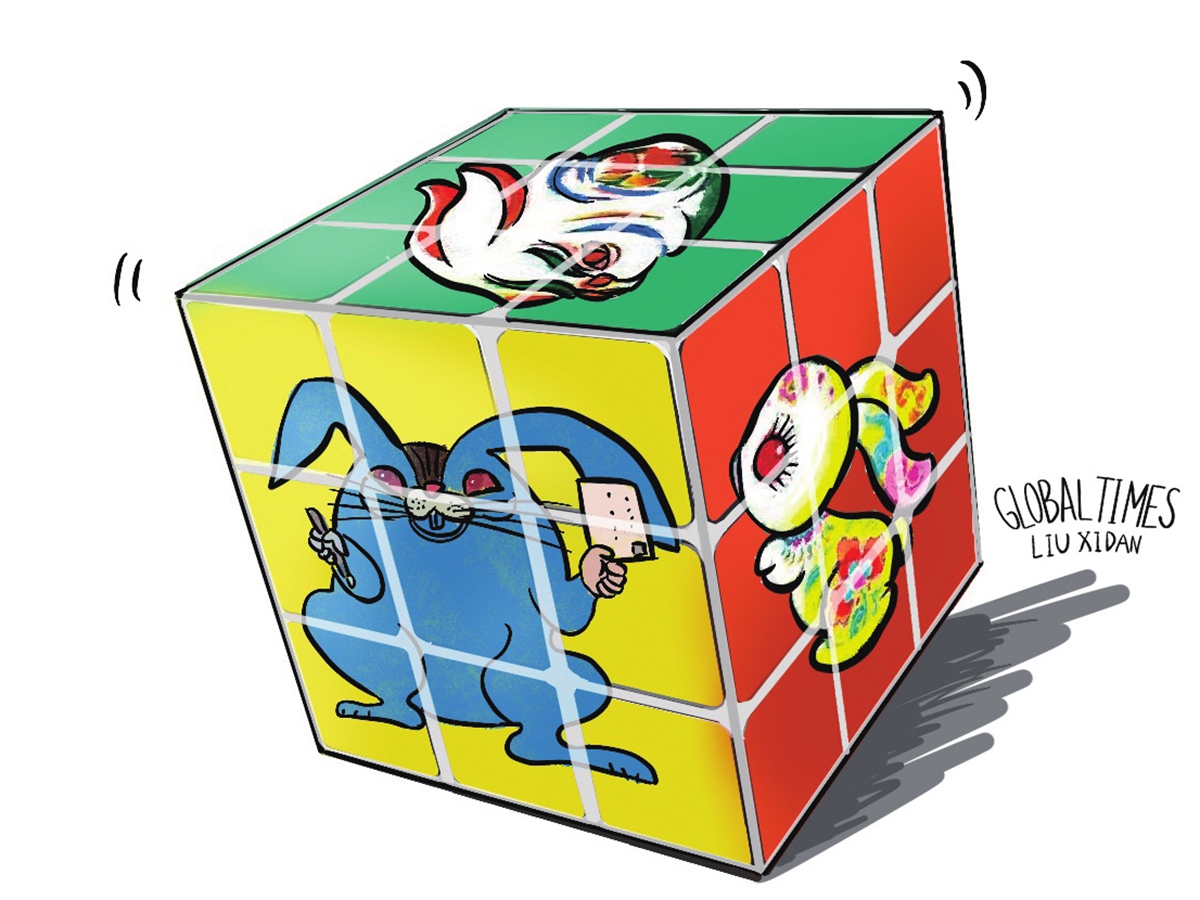
Illustration: Liu Xidan/Global Times
China Post on Thursday began officially selling a set of postage stamps to celebrate the arrival of the Year of the Rabbit. The two stamps, designed by Chinese master artist Huang Yongyu, feature a traditional white rabbit on one stamp and a blue bunny with red eyes on the other.
The latter one looked very unusual. This new look for what is normally seen as the most adorable member of the Chinese zodiac caused a towering wave of debate and discussion online when pre-sales for the stamps kicked off at the end of December 2022, with many questioning whether it fit the Chinese people's traditional aesthetics.
The controversial stamp shows a blue rabbit with a pen in its right hand and a letter in its left hand. With its red eyes and a smile that netizens have described as "strange." The blue little fellow has been seen as having a sinister air by some, which led to many opposing voices on social media.
However, there are also those who find this unique blue bunny is cool and childlike. China Post's official website describes the image as unrestrained and free and that it conveys good wishes for a brand-new year.
This is not the first time that the Chinese New Year stamp has caused controversy. The stamp for the Year of the Tiger also caused controversy in 2022 because of its "unconventional" image.
Actually, the beauty has different forms and the public aesthetic diversity can stimulate the art creation's booming.
While beauty is in the eye of the beholder and so people are more than welcome to find the blue bunny stamp "ugly," people should show more tolerance for different interpretations as this type of aesthetic diversity is the life blood of art.
Even if an artwork "offends" mainstream tastes for a time, the offense itself is not necessarily a bad thing. It can trigger discussion and critical thinking, and even improve the aesthetic appreciation and tolerance of society.
"Ordinarily beautiful" art may be less controversial, but time and time again it has been proven that these works tend to turn into "assembly line" products. Counter to that, many artworks with distinct features have made marks on public memory and, like fine wine, have become even more charming as time has gone on.
Aesthetic diversity is very important for artistic creation because no artist wants to paint only one single style until they retire. Meanwhile, the ever-changing nature of great art is what helps keep it vital and fresh in the eyes of the public, thus sparking an evolution in the tastes of society and the market.
It is normal for people to have different views on what makes art beautiful or ugly. Even when discussing the most famous masterpieces of the art world, it is difficult to get uniformly positive comments. So even though the "blue rabbit" was created by an art master, it is inevitable that it would not please everyone as it couldn't possibly meet the aesthetic standards of an entire country of people.
Ding Jiao, a comic artist well known for her comics about the Beijing 2022 Paralympic Winter Games, told the Global Times on Thursday that since the Chinese zodiac stamps have tended to have a set of traditional aesthetic standard, the fact the blue rabbit is not particularly in line with that style may be what sparked such a vocal outpouring of negativity. But this also shows that this work of art has stimulated people's pursuit and exploration of beauty, which is exactly what art is all about.
"All arguments are good for artistic creation, and different voices can help promote a new upsurge in artistic creation," said Ding.
Yu Jinlong, a cultural critic based in Beijing, suggested that there are many ways to stimulate the public's aesthetic imagination, such as reading more classic works including the poem of Chinese renowned poet Li Bai and Su Shi, visiting the art exhibitions of the well-known painters Qi Baishi and Zhang Daqian, and watching some TV programs related to Chinese traditional culture.




